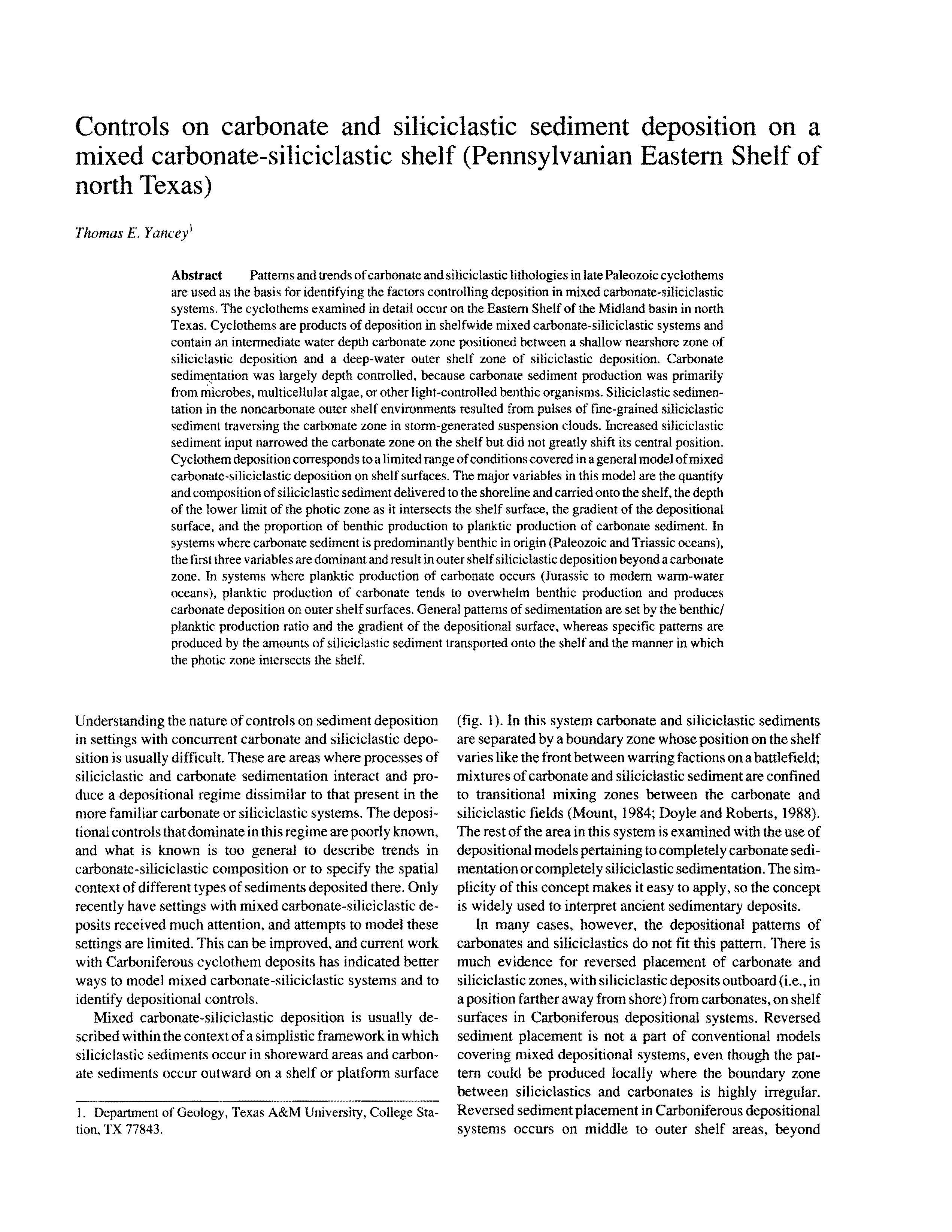Controls on carbonate and siliciclastic sediment deposition on a mixed carbonate-siliciclastic shelf (Pennsylvanian Eastern Shelf of north Texas)
DOI:
https://doi.org/10.17161/kgsbulletin.no.233.20462Abstract
Patterns and trends of carbonate and siliciclastic lithologies in late Paleozoic cyclothems are used as the basis for identifying the factors controlling deposition in mixed carbonate-siliciclastic systems. The cyclothems examined in detail occur on the Eastern Shelf of the Midland basin in north Texas. Cyclothems are products of deposition in shelfwide mixed carbonate-siliciclastic systems and contain an intermediate water depth carbonate zone positioned between a shallow nearshore zone of siliciclastic deposition and a deep-water outer shelf zone of siliciclastic deposition. Carbonate sedimentation was largely depth controlled, because carbonate sediment production was primarily from microbes, multicellular algae, or other light-controlled benthic organisms. Siliciclastic sedimentation in the noncarbonate outer shelf environments resulted from pulses of fine-grained siliciclastic sediment traversing the carbonate zone in storm-generated suspension clouds. Increased siliciclastic sediment input narrowed the carbonate zone on the shelf but did not greatly shift its central position. Cyclothem deposition corresponds to a limited range of conditions covered in a general model of mixed carbonate-siliciclastic deposition on shelf surfaces. The major variables in this model are the quantity and composition of siliciclastic sediment delivered to the shoreline and carried onto the shelf, the depth of the lower limit of the photic zone as it intersects the shelf surface, the gradient of the depositional surface, and the proportion of benthic production to planktic production of carbonate sediment. In systems where carbonate sediment is predominantly benthic in origin (Paleozoic and Triassic oceans), the first three variables are dominant and result in outer shelf siliciclastic deposition beyond a carbonate zone. In systems where planktic production of carbonate occurs (Jurassic to modern warm-water oceans), planktic production of carbonate tends to overwhelm benthic production and produces carbonate deposition on outer shelf surfaces. General patterns of sedimentation are set by the benthic/planktic production ratio and the gradient of the depositional surface, whereas specific patterns are produced by the amounts of siliciclastic sediment transported onto the shelf and the manner in which the photic zone intersects the shelf.
Downloads

